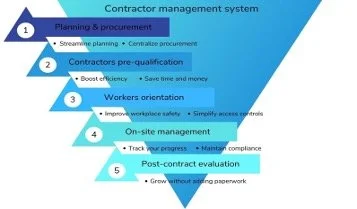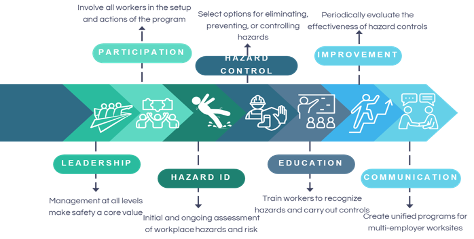Why Sub-Contractors in Construction need a Safety Management System (SMS)
Protecting Your Business, Team & Future
When you hear “safety management system,” it’s easy to think of large construction companies with full-time WHS officers and digital compliance teams. But what about smaller operators, the sub-contractors, trade teams, and owner-operators that make up the backbone of every construction site?
In today’s high-risk construction space, every subcontractor must have a clear, functional, and easy-to-use Safety Management System (SMS). Without it, your business could be one incident away from litigation, reputational damage, or even shutdown.
Why Construction Sub-Contractors Need a Safety Management System
An SMS is not just about ticking compliance boxes, It is your protection plan. As a construction subcontractor, especially if you are a solo owner-operator, you are legally and financially responsible for the safety of yourself, your workers, and others on-site.
Here is why a proper SMS matters in the construction industry:
Site Safety – Aids in preventing serious incidents in high-risk environments
Legal Protection – Helps avoid prosecution and fines under WHS Act 2011
Business Reputation – Proves you are a responsible and professional operator
Insurance & Claims – Your SMS supports your coverage and response
Tender Success – Builders won’t contract you without evidence of safety systems
Contractor Safety Across Project Phases
The diagram below outlines the five key stages of an effective Contractor
Management System, starting from planning and procurement through to post-contract evaluation. Each phase plays a critical role in boosting efficiency, improving safety, and maintaining compliance on construction sites. For subcontractors, aligning your Safety Management System with these steps ensures smoother operations and stronger risk control across the project lifecycle.
Litigation Risk is Real
Some sub-contractors assume that having a small team, or no employees, means they are off the hook. But under WHS legislation, you are still a PCBU (Person Conducting a Business or Undertaking), and you carry the same duty of care.
If something goes wrong and you do not have a documented SMS, you could face:
🔻 WHS Prosecution
🔻 Expensive fines or court action
🔻 Loss of current and future contracts
🔻 Insurance disputes or claim denial
🔻 Personal financial liability
What a Good Construction SMS Should Include
You do not need a corporate-grade system. You need a practical, working system tailored to the risks of a construction environment.
Basic SMS tools for construction sub-contractors:
Site-Specific Safety Plans
SWMS (Safe Work Method Statements)
Incident Reporting Procedures
Induction & Training Records
Toolbox Talk Templates
Risk Assessments
PPE & Equipment Logs
Core Elements of a Simple, Effective SMS
A strong SMS covers leadership, hazard control, worker participation, and ongoing improvement.
Your SMS should follow safety leadership principles found in ISO 45001 and other WHS standards. It is not just about having the forms, it is about creating a proactive safety culture on site.
Make Safety Work for You
Whether you are doing tiling, formwork, electrical install, or site clean-up, your Safety Management System should reflect the work you actually do. It should be easy to update, simple to use, and ready to show to clients or inspectors at any time.
Need Help Building a Compliant SMS?
WHS Rescue offers ready-to-go SMS templates and training designed for small construction subcontractors and owner-operators. We make it simple to stay safe, compliant, and competitive in a tough industry.
Stay Safe, Stay Compliant
An effective SMS is not just admin, it is a strategic tool to keep you on-site and off the legal radar. Protect your contracts, your workers, and your reputation with a strong, construction-focused safety system.
Need support? Contact WHS Rescue today for subcontractor-focused safety solutions that work in the real world.


